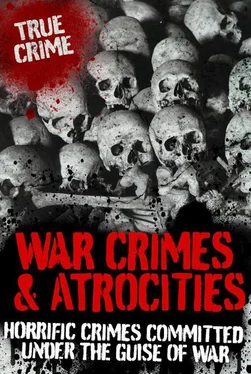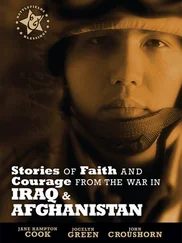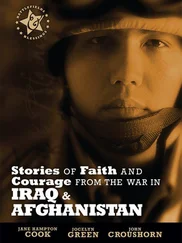The infrastructure of the Kurdish population was almost destroyed by the al-Anfal massacre. By the time the genocidal frenzy was over, 90 per cent of the Kurdish villages and more than 20 towns and villages had literally been wiped off the map.
APPALLING TREATMENT
In August 1988, with the al-Anfal campaign coming to an end and many months of vicious chemical attacks on civilian populations, the UN Sub-committee on Human Rights voted to condemn Iraq for its human rights violations. It is blatantly obvious that the influence of Saddam Hussein’s dictatorship affected all levels of Iraqi society, whether through the influences and actions of the Ba’ath Party or the Iraqi army and security forces. Hussein’s use of strong patriarchal control over ministers and senior party officials led to their loyalty and subservience to their leader, resulting in the unthinkable terror and cruelty that existed during his term of power.
How does Saddam Hussein defend his treatment of the Iraqi people? By arguing that he had to use powerful methods in an effort to unite such a large and diverse nation as Iraq, that had Kurds in the north, Sunni Muslims in the middle and Shi’ites in the south. When asked by a very nervous reporter why Hussein had used such extreme measures under his regime, he simply replied, ‘Of course. What do you expect if they oppose the regime?’
END OF HIS REGIME AND CAPTURE
In 1998, Saddam Hussein failed to conform to the requests of UN weapons investigators, which instigated the issuing of the Iraq Liberation Act, authorizing the removal of his regime. The USA tried its hardest in 2002 to try and topple the Iraqi leader, but Hussein kept insisting that he didn’t possess any weapons of mass destruction. In March 2003, the USA led the war on Iraq to try and oust Hussein and to end his regime once and for all.
On Sunday, 14 December, 2003, the toppled leader was found hiding in a tiny dirt hole by the American Special Forces. His accommodation was a far cry from his former palaces of unadulterated luxury. When he was discovered, he was sitting among filth and squalor, surrounded by rubbish, plastic bags, empty bottles, rotten fruit and just one broken chair as furniture.
Hussein and his 11 top known associates (dubbed ‘Saddam’s Dirty Dozen’), faced preliminary charges on July 2003 before an Iraqi Special Tribunal, on charges of war crimes and crimes against humanity. The actual trial started on 19 October, 2005, in Baghdad, and Hussein was charged with killing 148 people in Dujail, following an attempted assassination on him when he visited the village. On 5 November, 2006, the tribunal reached its decision and Hussein was sentenced to death by hanging. On top of this it is thought that he will be charged with further atrocities against the Iraqi people. Below is a list of his alleged crimes that will be raised by the tribunal.
1974
Five known, and possibly many more, Shia religious leaders are killed.
1970–2003
After the discovery of 270 mass graves, Hussein faces being charged with killing tens of thousands people.
1982
Following a failed assassination attempt on Hussein, 148 people were killed in the village of Dujail.
1983
About 8,000 male members of the Kurdish Barzani tribe were arrested and deported to southern Iraq, but no trace of them has ever been found.
1988
Up to 182,000 people were killed or died from cold and hunger when Hussein attempted to depopulate Kurdish regions. About 5,000 people were killed in a chemical attack on the village of Halabja in just one day.
1990
When Iraq was invaded in 1990, hundreds of citizens of Kuwait were rounded up and tortured. 700 oil wells were set alight, which polluted the Persian Gulf.
1991
In the aftermath of the Gulf War thousands of people died when Hussein’s regime suppressed uprisings by Kurds and Shias.
HUSSEIN ON TRIAL
The trial of the dethroned Iraqi dictator Saddam Hussein was flawed right from the start with lawyers and witnesses being murdered, judges dismissed because they were deemed to be biased, and considerable outside political interference. The trial began on 19 October, 2005, and the following day a defence attorney was kidnapped and later killed. On 8 November a lawyer for a co-defendant was killed. The trial reconvened on 28 November and on 4 December one of the five trial judges stepped down. Defence lawyers walk out of the court the following day when they are denied the right to challenge the trial’s legitimacy. On 7 December, Saddam refused to attend court proceedings and on 21 December claimed that he had been tortured by Americans whilst being held in detention. The chief judge, a Kurd, resigned on 15 January, 2006 and another Kurd is named to replace him. On 21 June another lawer for Saddam Hussein is kidnapped and killed. Hussein goes on hunger strike and is force-fed through a tube and on 23 July he is hospitalized. The first trial is adjourned on 27 July and the new trial does not reconvene until 21 August.
Hussein, his half-brother, Barzan al-Tikriti and Iraq’s former chief judge Awad Hamed al-Bander were being charged with crimes against humanity following a wave of revenge killings in 1982 in the northern city of Dujail, after an assassination attempt on Hussein. On 5 November, 2006, celebratory gunfire was heard across parts of Baghdad and other Iraqi cities, as Hussein and his two former top Iraqi officials were sentenced to death by hanging.
On the day of the sentencing Hussein walked calmly into court wearing his usual dark suit and white shirt, with his Koran in his hand. Judge Rauf Abdel Rahman ordered him to stand as he read out the verdict, but Hussein refused and had to be forcibly removed from his seat by court attendants. As the judge read out the death sentence, Hussein shouted, ‘Allahu Akbar! (God is Great). Long live Iraq! Long live the Iraqi people! Down with the traitors!’
The celebrations in Baghdad were in defiance of a 12-hour curfew that had been placed on city, because of expected retaliatory violence from Hussein’s Sunni Arab supporters. Since the trial began, there has been soaring sectarian violence which has brought Iraq on the brink of civil war. Few Iraqis believe that the verdict will help to ease the conflict in any way, while US President, George Bush, welcomed it as a ‘milestone… to replace the rule of a tyrant with the rule of law’. The question, however, that is in the back of many peoples’ minds, is will his death really bring justice for his hundreds of thousands of victims?
Invasion of Iraq: A War Crime in Itself?
2003–2004

The invasion of Iraq in 2003, codenamed ‘Operation Iraqi Freedom’, will always remain a controversial subject and, as more and more hideous pictures and stories were released by the media worldwide, it exposed the horrors that were being inflicted under the name of ‘war’. The invasion of the century officially started on 20 March, with the objective of ‘disarming Iraq of weapons of mass destruction, to end Saddam Hussein’s support for terrorism and to free the Iraqi people’. All good reasons to go to war – but it has since been deemed a violation of international law, breaking the UN Charter. Since the horrific attacks of 11 September, 2001, on the Twin Towers in New York, it is easy to see why the USA wanted to take action in its fight against global terrorism. The wrong weapons in the wrong hands can threaten people worldwide, but what is inconceivable is the treatment of Iraqi civilians and soldiers in the effort to rid the world of these weapons. Pictures that were broadcast on Australian television showed pictures of Iraqi soldiers – naked, wounded, covered with blood, women’s underwear draped over their heads – in painful and degrading positions. Is this really how prisoners of war should be treated? Other footage revealed soldiers brutally assaulting a group of youths, dragging them into a compound and beating them with batons and kicking them until they lost consciousness.
Читать дальше













